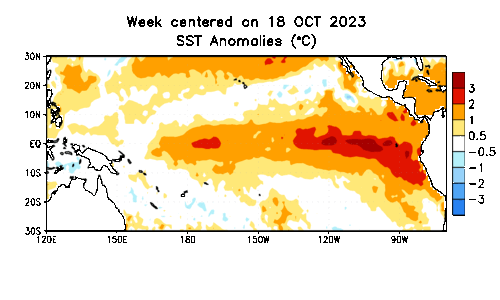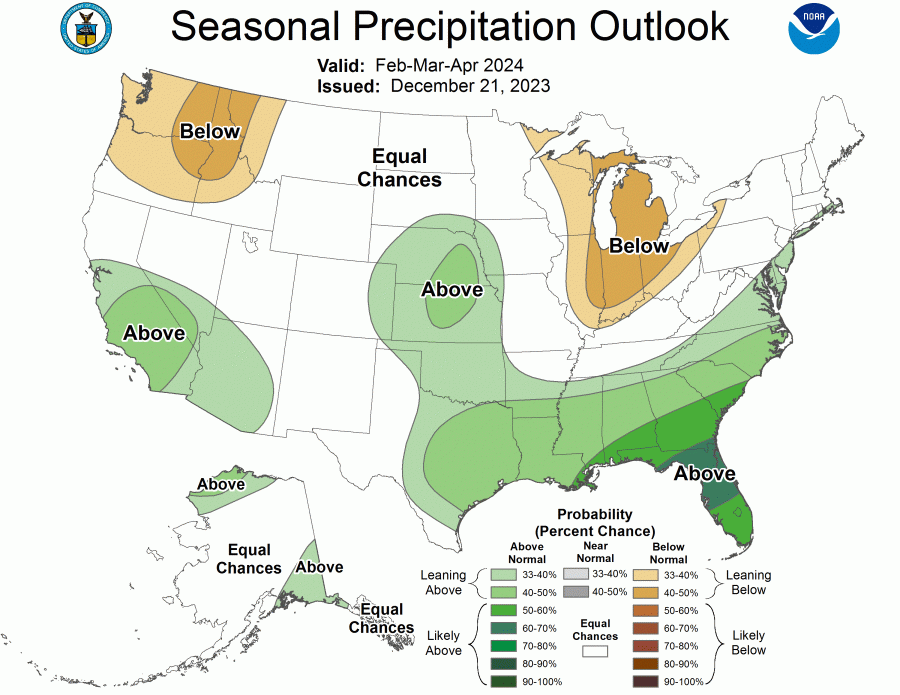El Niño is here, but California isn’t seeing the impact, at least not yet.
Joe Sirard, a meteorologist with the National Weather Service office in Los Angeles, says precipitation for the current water year is generally lagging behind averages.
“Los Angeles, San Diego and San Francisco are all below normal in rainfall,” Sirard told KTLA on Monday.
El Niño is the warming of surface water temperatures along the equator, which can mean heavier-than-average rainfall at lower elevations and above-average snowfall in the Sierra Nevada mountains.

In a 90-day outlook released in November, the government’s climatologists said there was a 40% to 50% chance of above-normal moisture for all of California through February.
Sirard says that has not materialized yet, except in isolated areas.
“We’ve had a lot of rain along parts of the Central Coast, especially in San Luis Obispo and Paso Robles … but the large coastal cities have been drier.”
Sirard says California is currently seeing a northwestern air flow that is bringing cooler temperatures but very little precipitation, and the short-term outlook shows no significant change.
In the current water year, which started on October 1 and runs through September 30, downtown Los Angeles has received 3.18 inches of rain, which is 79% of the average, according to the National Oceanic and Atmospheric Administration (NOAA). San Francisco has seen 5.51 inches of rain, or 75% of average. San Diego is below 50%.
At this point in 2023, California was well on its way to one of its wettest and snowiest water years on record as one atmospheric river after another drenched the state with torrential rain and buried the mountains under historic levels of snow.
NOAA’s latest outlook shows a more limited area of California that is expected to see above-normal precipitation through April.

Sirard says there is still plenty of time for El Niño to deliver in California, not only this winter but through the remainder of the water year.
“We don’t have a big moisture feed, like an atmospheric river, coming into our area right now,” said Sirard. “But the pattern will likely fluctuate and all it takes is one week of heavy rain to put us above normal.”











